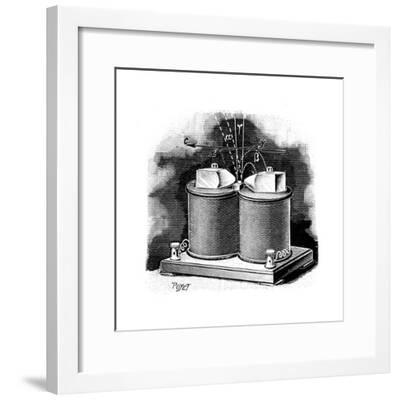

US Radium employed hundreds of women at their factory in Orange, New Jersey, including Grace Fryer. By this time the dangers of radium were better understood, but US Radium assured the public that their paint used the radioactive element in “such minute quantities that it is absolutely harmless.” While this was true of the products themselves, the amount of radium present in the dial-painting factory was much more dangerous, unbeknownst to the workers there. They also marketed the pigment for non-military products such as house numbers, pistol sights, light switch plates, and glowing eyes for toy dolls. Hammer’s recipe was used by the US Radium Corporation during the First World War to produce Undark, a high-tech paint which allowed America’s infantrymen to read their wristwatches and instrument panels at night. Hammer went on to combine his radium salt with glue and a compound called zinc sulfide which glowed in the presence of radiation. Radioactivity was somewhat new to science, so its properties and dangers were not well understood but the radium’s slight blue-green glow and natural warmth indicated that it was clearly a fascinating material. The famous scientists Pierre and Marie Curie had provided him with some samples of their radium salt crystals. Hammer left Paris with a curious souvenir. In 1902, twenty years prior to Grace’s mysterious ailment, inventor William J. One dentist in particular took notice of the unusually high number of deteriorated jawbones among local women, and it took very little investigation to discover a common thread all of the women had been employed by the same watch-painting factory at one time or another.
1920s radium dial painters effects series#
Her jawbone was honeycombed with small holes, in a random pattern reminiscent of moth-eaten fabric.Īs a series of doctors attempted to solve Grace’s mysterious ailment, similar cases began to appear throughout her hometown of New Jersey. Using a primitive X-ray machine, the physician discovered serious bone decay, the likes of which he had never seen. Her troubles were compounded when her jaw became swollen and inflamed, so she sought the assistance of a doctor in diagnosing the inexplicable symptoms. By 1915, a single gram cost what would be around $1.9 million in today's money, and that means many of the products didn't contain real radium - fortunately for consumers.In 1922, a bank teller named Grace Fryer became concerned when her teeth began to loosen and fall out for no discernible reason. Children played with toys painted with radium, and performers on the New York stage danced and twirled in costumes that glowed. Radium was in such high demand that prices soared. People drank radium water and brushed their teeth with radium toothpaste, and radium cosmetics were all the rage. right? Real doctors started experimenting with it as a cure for things like tuberculosis and lupus, while the quacks started marketing their own so-called cures for everything from acne and baldness to impotence and insanity. Early experiments using radium to kill cancer cells had been a success, and if it could kill cancer, surely, it could kill whatever else was ailing you. It really started in earnest in 1904, when LD Gardner began marketing a health water he called "Liquid Sunshine." According to the New York Historical Society, belief in radium's healthy benefits was rooted in a massive misstep in logic.


 0 kommentar(er)
0 kommentar(er)
